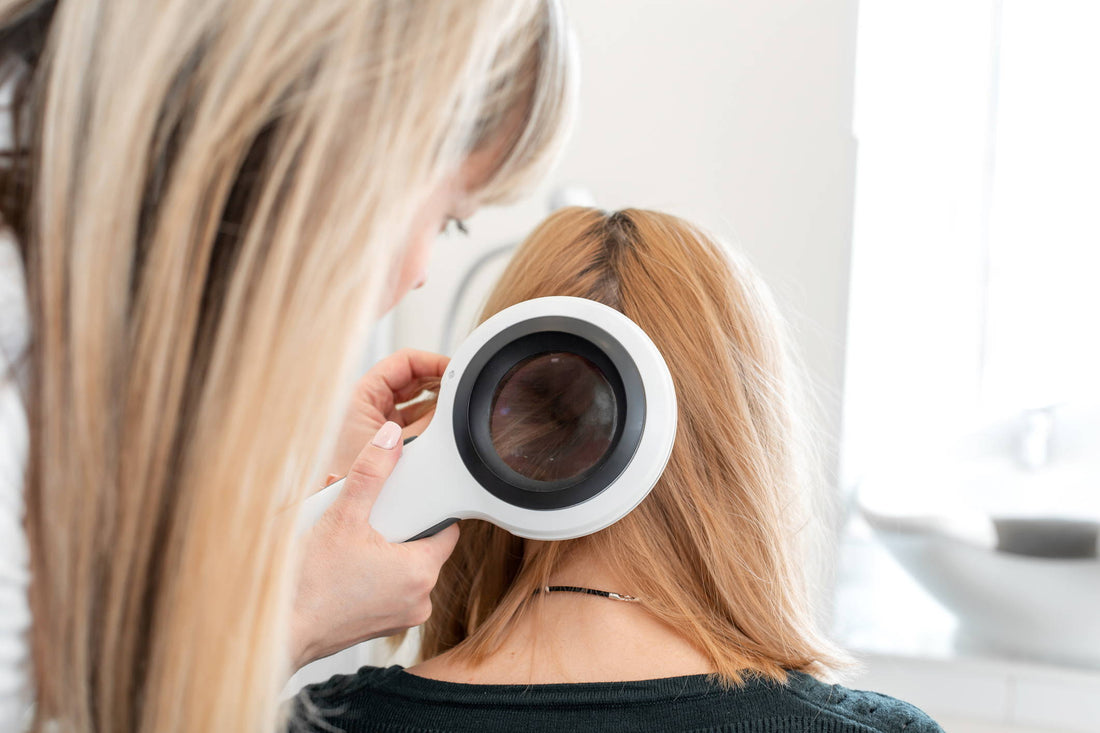In this article:
- What is topically clindamycin?
- What is it used to treat?
- Does topical clindamycin cause hair loss?
- How to restore hair loss from topical clindamycin
What is topical clindamycin?
Clindamycin is an antibiotic that treats a variety of infections that can occur in the body. Antibiotics target specific bacteria based on unique properties that make up their cell walls and other structures. Therefore, different antibiotics are used to treat different types of bacterial infections.
People can take clindamycin as an oral medication that they swallow or a topical medication they apply on their skin. Both routes can cause several side effects that are usually temporary, but some may outlast the course of treatment.
What is it used to treat?
Topical clindamycin, as you may be able to predict, is used to treat various skin infections. One of the most common things it treats is acne. It works by slowing or altogether stopping the spread of bacteria that specifically cause acne and also helps to reduce swelling.
Sometimes, it may also be used to treat other skin infections like folliculitis, where a pustule or inflammatory nodule erupts around a hair follicle. Folliculitis can be widespread and may cause hair loss in and of itself, and clindamycin is a treatment for this condition.
Does topical clindamycin cause hair loss?
Topical clindamycin may cause hair loss in some individuals. However, we also know that some of the conditions that need treatment from this medication also cause hair loss, including folliculitis.
Generally, a course of clindamycin should not last that long, and if it is effective, you should not need multiple doses. If you use it for acne treatment, it is unlikely to cause hair loss on your scalp unless the medication comes into contact with hair follicles. Some people lose hair around their eyebrows if they need to treat the skin around that area.
Other side effects can include:
- Dry, peeling skin
- Redness
- Burning or itching
- Oily skin
- New blemishes
- Headaches
While hair loss may happen from topical clindamycin use, it is more common with oral clindamycin, which is absorbed systemically and has more side effects. Typically, side effects from oral antibiotics do not last too long after treatment is finished, but some people do have residual effects, including temporary hair loss.
Bear in mind, while antibiotics may have side effects, the effects of not treating an infection are far more significant. Prolonged illness can increase your risk for hair loss even more because infections place your body under severe stress. Indeed, we may not have a clear idea whether antibiotics or the initial infection are the bigger culprits behind hair loss.
Start doing something about hair loss
How to restore hair loss from topical clindamycin
If you do experience hair loss after taking topical clindamycin, the best thing you can do is support hair regrowth with the proper diet, lifestyle modifications, and products.
Complete your treatment plan
As always with antibiotics, you must follow your doctor’s orders on completing your entire course of treatment. People who do not finish their antibiotics may be at further risk for continued infection that may be harder to treat, and it also leads to antibiotic resistance.
Nourish your body
Infections (even acne) can take a toll on your body, so making sure you eat the right foods that minimize inflammation is vital. Focus on foods rich in protein and vitamins like lean meat, fish, veggies, and fruit.
Get plenty of rest
Your body will likely benefit from extra sleep, so make sure to give yourself plenty of rest to recover. The better rested you are, the more energy your body can allocate toward things like hair growth.
Use hair regrowth products
Topical clindamycin use may cause temporary hair loss. However, some conditions like folliculitis may lead to permanent hair loss. If your hair loss is likely to be temporary, make sure to use a good shampoo and conditioner system that support hair growth, such as the REVITA line. And, if you or your doctor suspect your hair loss may be prolonged or permanent, don’t hesitate to start using a hair regrowth topical compound like 5% Nanoxidil to boost circulation, block DHT, and suppress inflammation.

